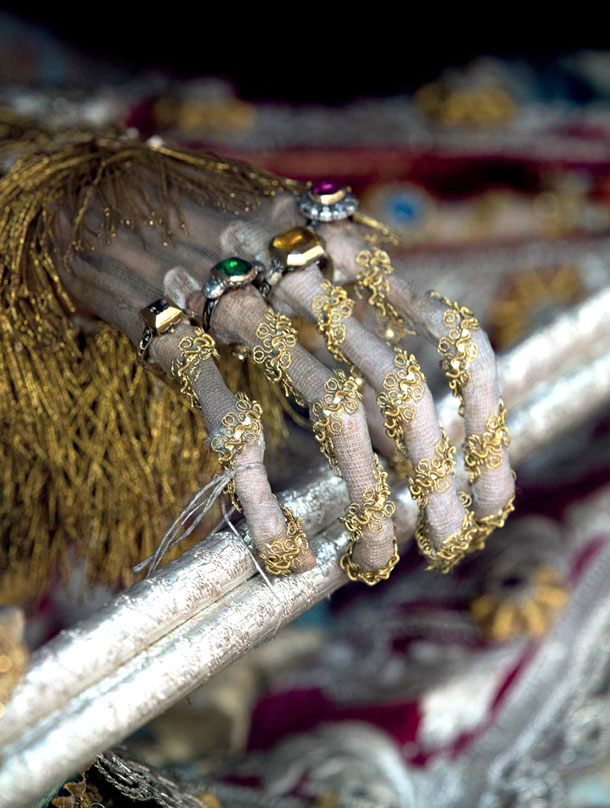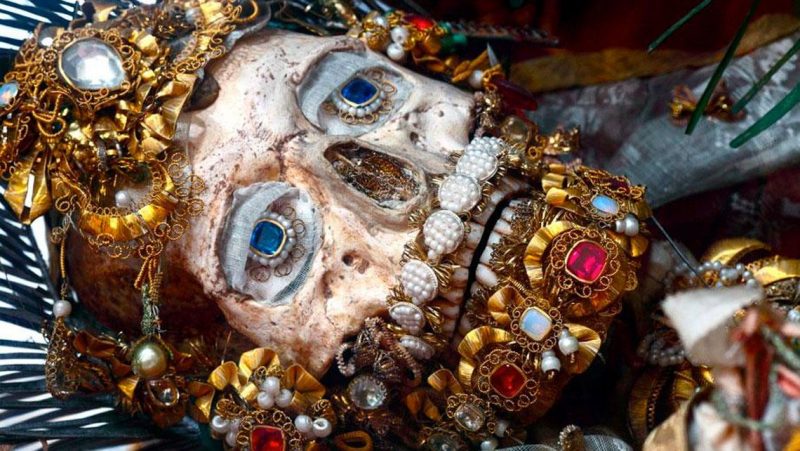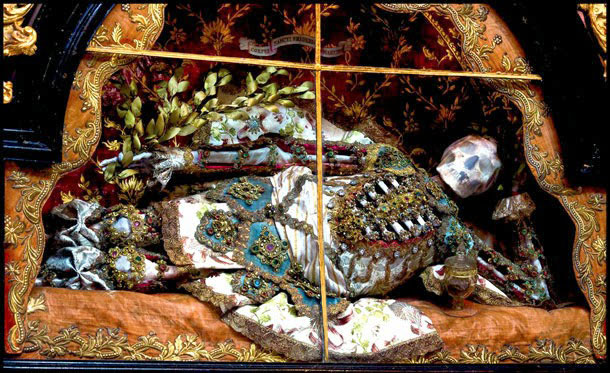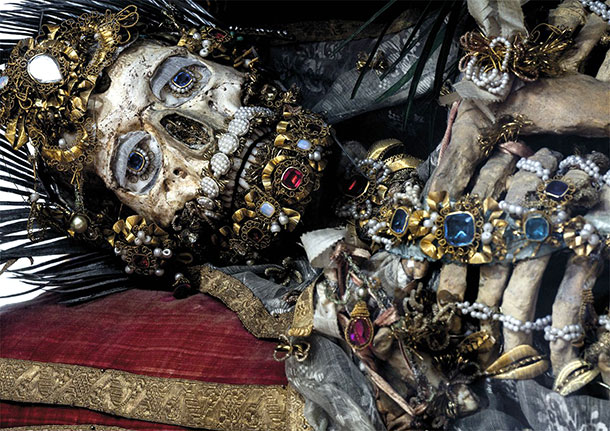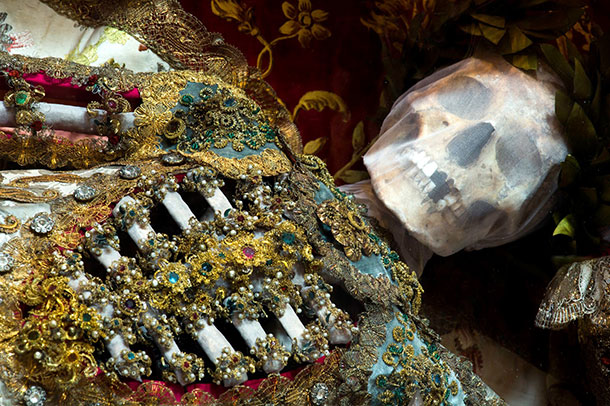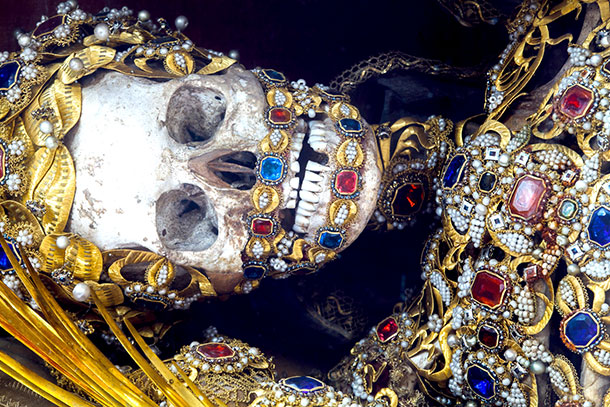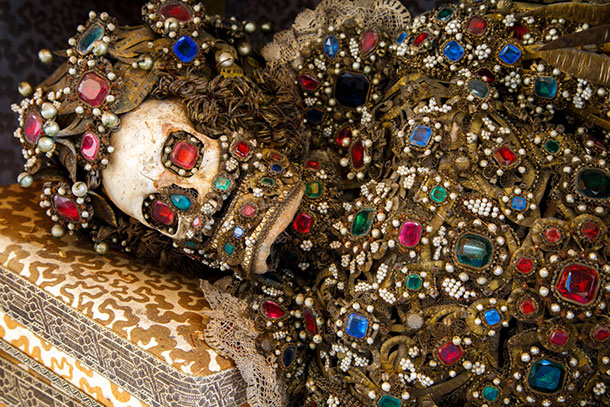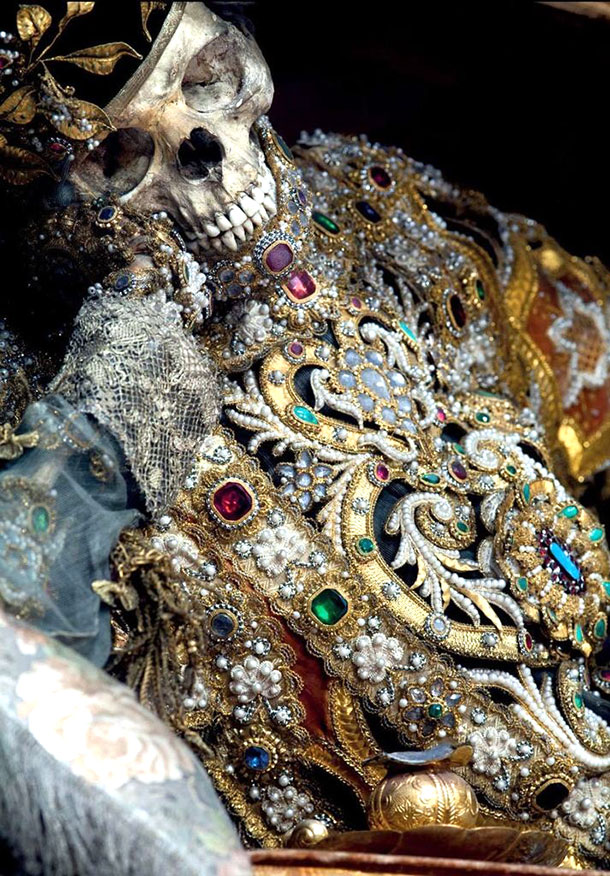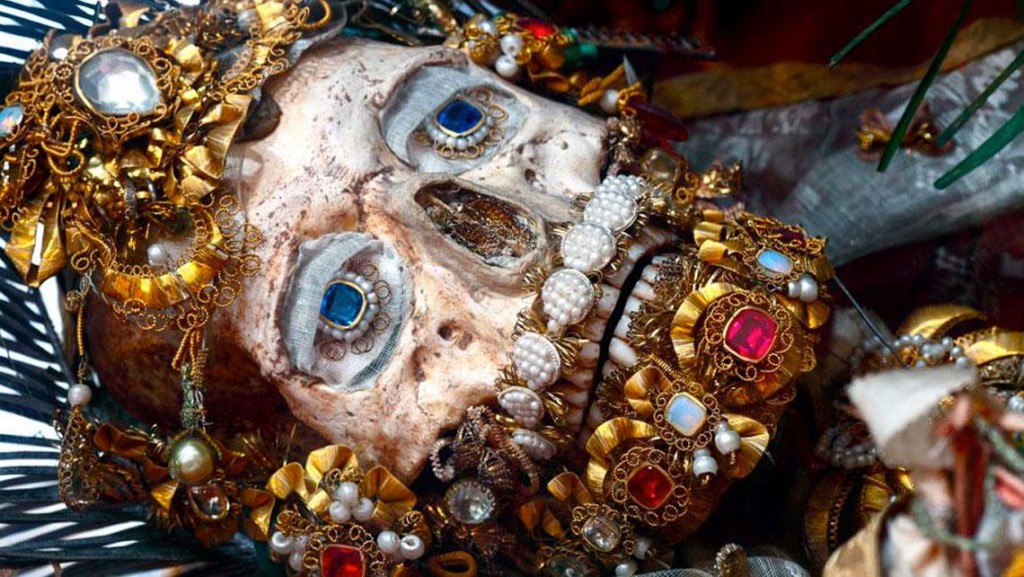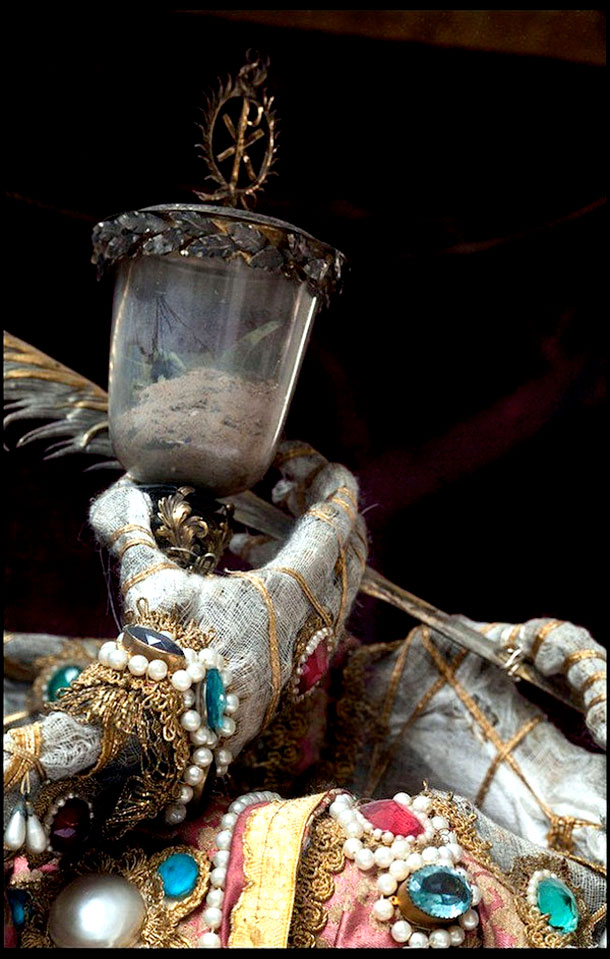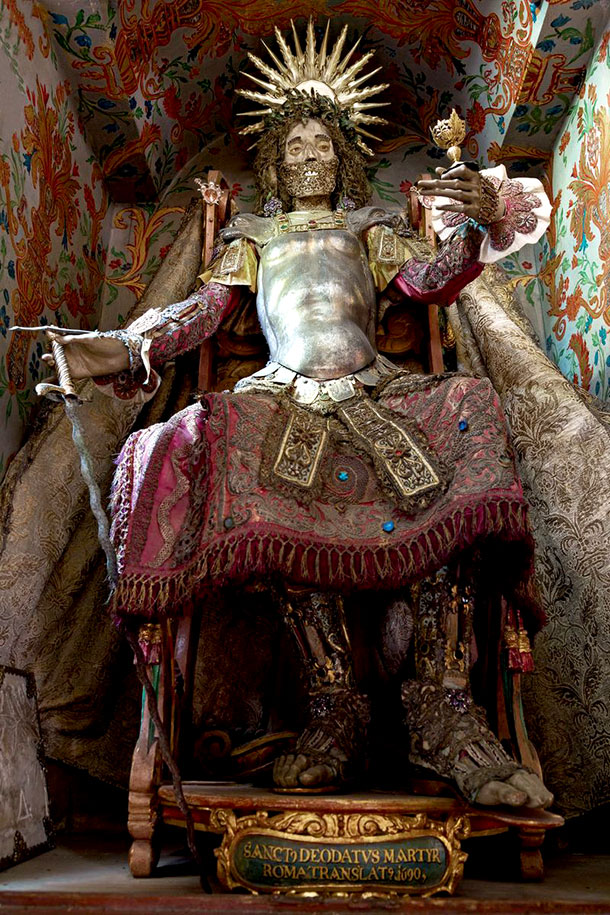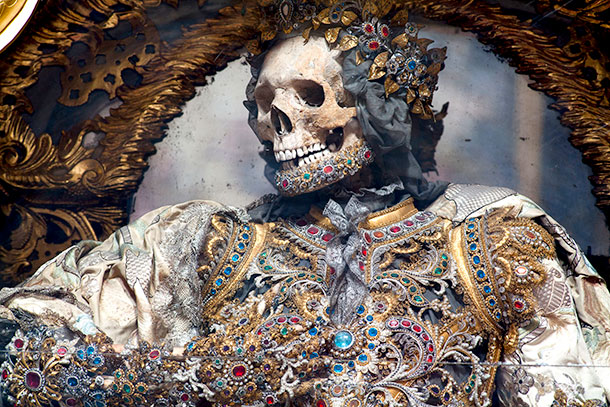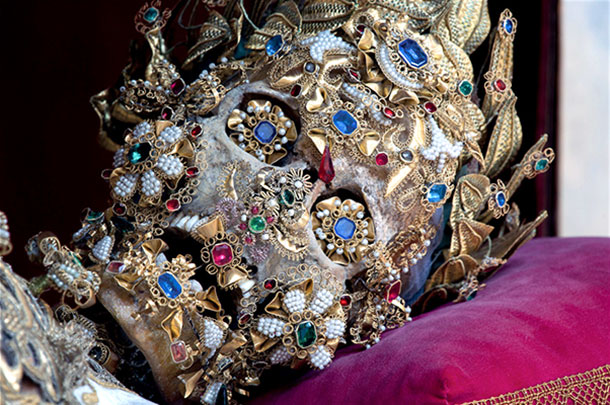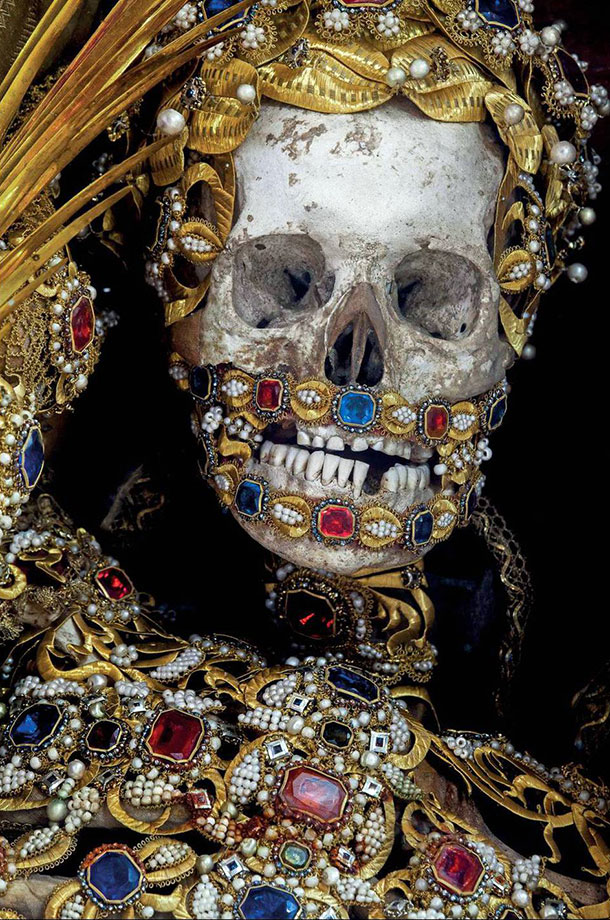A relic hunter dubbed ‘Indiana Bones’ has lifted the lid on a macabre collection of 400-year-old jewel-encrusted skeletons unearthed in churches across Europe.
Art historian Paul Koudounaris hunted down and photographed dozens of gruesome skeletons in some of the world’s most secretive religious establishments.
Incredibly, some of the skeletons, said to be the remains of early Christian martyrs, were even found hidden away in lock-ups and containers.
Reports Daily Mail
They were sent to Catholic churches and religious houses to replace the relics destroyed in the wake of the Protestant Reformation in the 1500s.
Mistaken for the remains of early Christian martyrs, the morbid relics, known as the Catacomb Saints, became shrines reminding of the spiritual treasures of the afterlife.
They were also symbols of the Catholic Church’s newly found strength in previously Protestant areas.
Each one was painstakingly decorated in thousands of pounds worth of gold, silver and gems by devoted followers before being displayed in church niches.Some took up to five years to decorate.
This incredible find inspired Paul Koudounaris to write the book ‘Heavenly Bodies: Cult Treasures & Spectacular Saints from the Catacombs‘, in which he explores the origins and history of ‘The Catacomb Saints’, focusing on questions as who were they? How exactly did they die? Who ordered them to be placed in the catacombs? And why had they laid forgotten in Europe’s religious institutions for so long?
Mr Koudounaris told Daily Mail: ‘I was working on another book looking into charnel houses when I came across the existence of these skeletons.
‘As I discovered more about them I had this feeling that it was my duty to tell their fascinating story.
‘After they were found in the Roman catacombs the Vatican authorities would sign certificates identifying them as martyrs then they put the bones in boxes and sent them northwards.
‘The skeletons would then be dressed and decorated in jewels, gold and silver, mostly by nuns.
‘They had to be handled by those who had taken a sacred vow to the church – these were believed to be martyrs and they couldn’t have just anyone handling them.
‘They were symbols of the faith triamphant and were made saints in the municipalities.
‘One of the reasons they were so important was not for their spiritual merit, which was pretty dubious, but for their social importance.
‘They were thought to be miraculous and really solidified people’s bond with a town. This reaffirmed the prestige of the town itself.’
He added: ‘It’s impossible to put a modern-day value on the skeletons.
